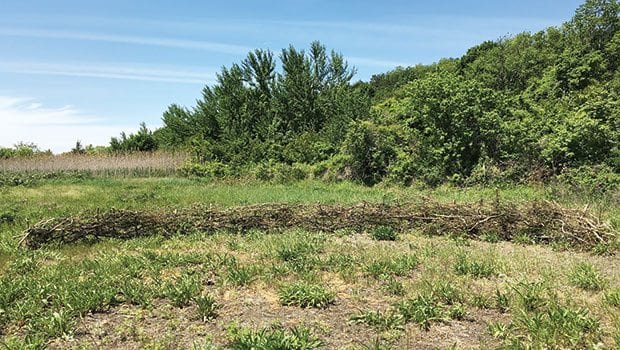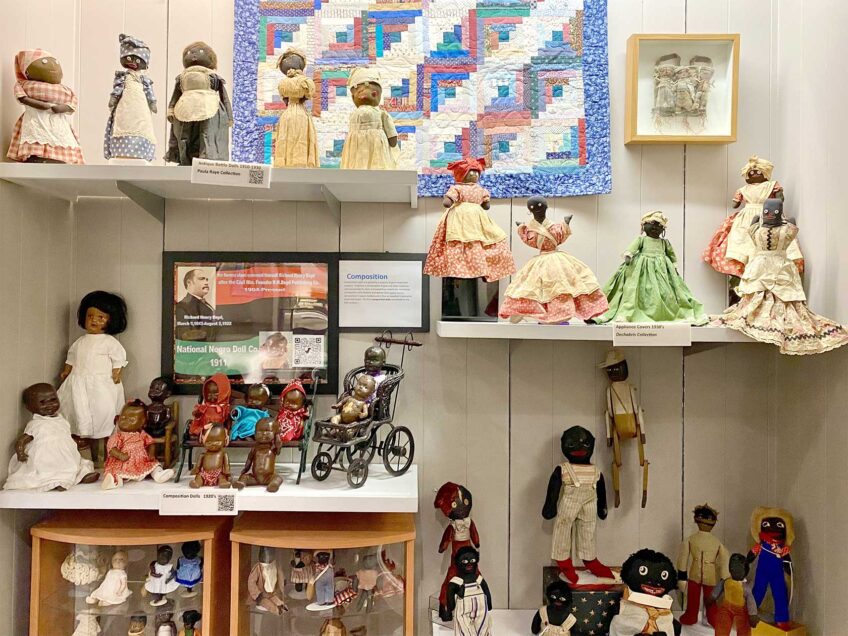
On Saturday, June 24, Boston Harbor Now launched its latest “[Re]creation” public art project, a series of temporary, site-specific sculptures on Peddocks Island. The sculptures are designed to creatively interface with the natural environment while incorporating the history of the Harbor Islands.
On the Web
For more information about Holley’s work, visit: www.bostonharborn…
For artist Nia Holley, this project tugged on very specific heartstrings. As both an African American and an indigenous person, Holley has ancestral ties to the islands. She explains that education about the land frequently centers on European history. “Since I’ve been living in Boston, I’ve never heard justice done to the indigenous people from the islands,” she says. This project was her chance to dole that justice out.
According to Holley, the Ponkapoag and Neponset tribes utilized the Harbor Islands from the Ice Age onward. The islands served as unique resource because the major rivers, Neponset, Charles and Mystic, merge there, bringing people from North, West and South.
For the “[Re]creation” project, Holley created a fish weir, a traditional fence-like obstruction built in a river to direct the path of fish. The Ponkapoag and Neponset tribes used this technology for more effective fishing. In this piece, Holley uses the posts of the weir to reference parts of her indigenous heritage. The set of seven posts represents the seven generations, a principle that dictates that contemporary people must consider how every decision they make will affect their descendants seven generations in the future. The set of 13 posts symbolizes the 13 moons of the original calendar, and the set of four posts represents the four directions.
The fish weir installation is also a commentary on the innovative equipment of the island’s native inhabitants. Holley says she intended for the exhibit to dispel ideas that tribal people are primitive. The artists were instructed to only use introduced, alien plants in their constructions, as the island is trying to preserve native plant life. “The balance of state, federal and inter-tribal participation sets a really good example of the significance of these islands in balancing relationships, not only with the plants and animals we thrived from, but also with the people we share this space with,” says Holley.
She hopes the project will break down stereotypes about indigenous people, especially in the current political climate. “Being indigenous and also being black, the current situation in our country is nothing new to me,” she says. “It’s important to wake up every day and show them we’re still here.”




![Banner [Virtual] Art Gallery](https://baystatebanner.com/wp-content/uploads/2024/04/NJ-H_1-713x848.jpg)
